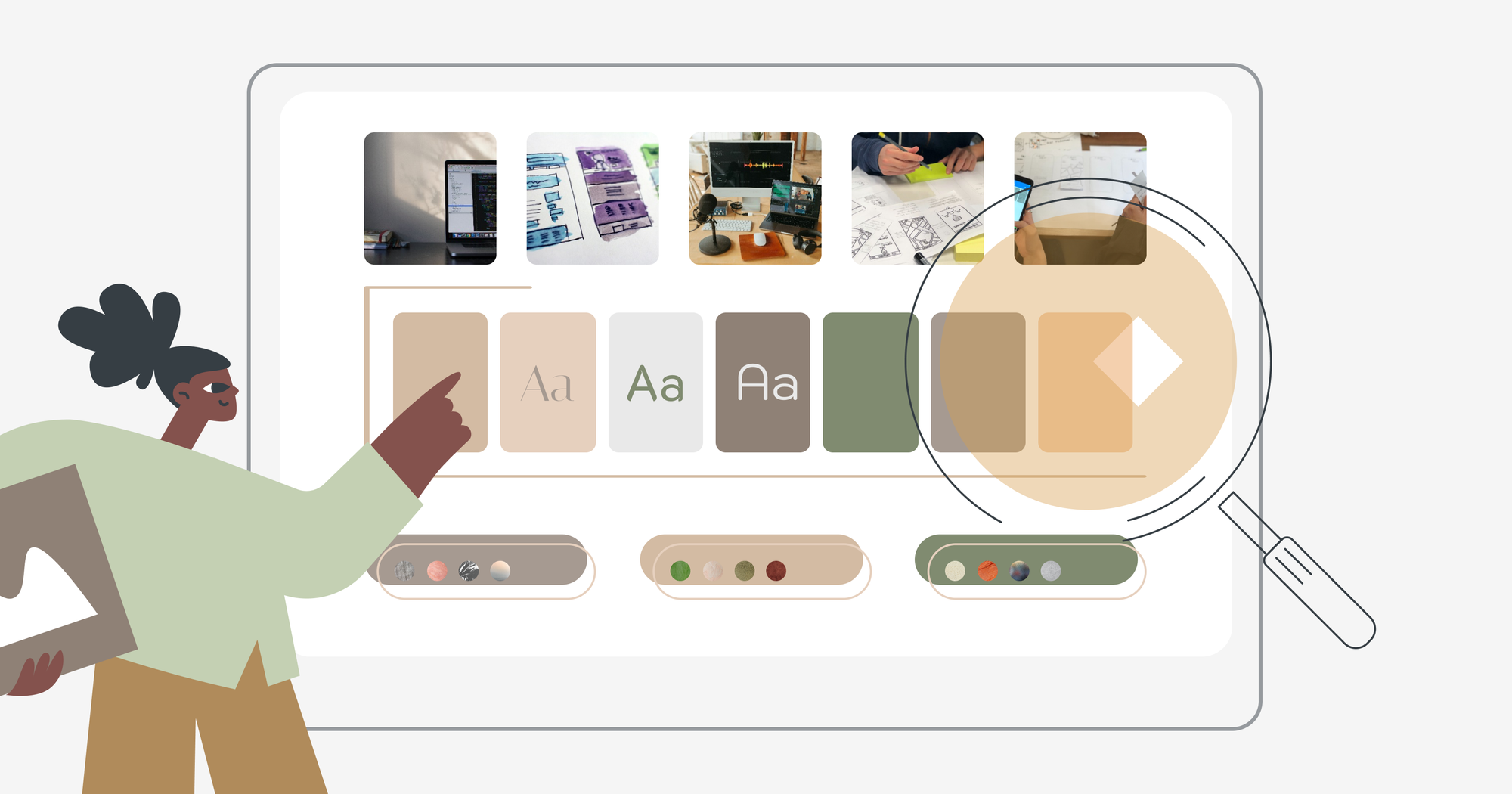Clients always want to get a quick and first-rate result. However, sometimes bottlenecks arise because they don’t always have a clear idea of what exactly they would like to see.
It goes without saying that the website should be attractive, functional, in a specific color scheme, etc. Nonetheless, the artist’s imagination regarding the visual embodiment may differ and that leads to the need of revising the project and, accordingly, extending the execution time.
Creating a mood board may become a way out of such a situation.
Mood board is a selection of photos, illustrations, textures, colors, fonts, and everything that reflects the style, mood, and concept of the project.
The visual resources (references) picked up by the designer serve as the core for the future mood board, which is implemented in the form of a collage using such tools as Canva, Pinterest, Figma, Adobe XD. By the way, customers can also create a mood board to convey their project vision and wishes to the designer.
Mood board helps:
- Seek inspiration and visualize ideas.
The first thing the client sees is a visualization of the idea. Mood board perfectly deals with creating a close image of a project by showing colors, shapes, textures, fonts, and other pivotal elements. It assists a designer in collecting ideas for a project that can become handy by being an inspiration when creating a unique design. - Determine the atmosphere and mood.
Mood board helps to identify the desired atmosphere and mood of the project. It allows the expression of emotions, and intentions that should be conveyed through the design and reflect individuality. - Communicate and cooperate.
Mood board advances communication between the designer and client, simplifies the discussion of ideas, and clarifies the client’s expectations. It results in building trust and understanding between the parties, making the cooperation process more efficient and even saving time.
The main drawbacks of this tool are:
- Lack of details.
Mood board contain general concepts, colors, textures and shapes, but do not show details. Therefore, the designer should always additionally specify individual items of the project. - Variation of interpretations.
Mood board can be interpreted in different ways, and that can lead to misunderstandings between the designer and client if their perception of the concept is distinctive. Consequently, it is still worth discussing the details at the same time. - Does not consider a rule of thumb.
Mood board normally focuses on the visual aspects of design and doesn’t always consider practicality. Sometimes, being influenced by the mood board, the design that does not take into account functional limitations can be developed.
To sum everything up, mood board can be used as one of the tools, but one should not forget about communication at every stage of the project cycle. Applying this approach is likely to save time and allow you to implement all the customer’s visions.
Turn your ideas into reality with us! Contact us to discuss more details.

